Nuclear disaster in Chazhma bay
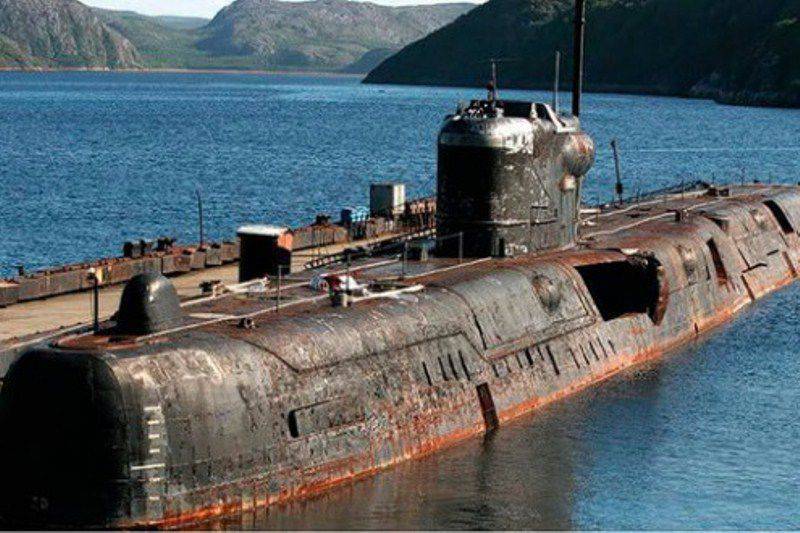
August 10, 1985, the year before the Chernobyl disaster, in the Far Eastern Bay of Chazhma when replacing the active zones of two reactors conducted on a submarine K-431, part of the 4th flotilla nuclear submarines of Pacific Fleet, a nuclear disaster occurred, which led to radioactive contamination of vast territories.
According to a number of experts, the cause of the nuclear accident in Primorye, which later received the name of Chazhminskaya, and the subsequent Chernobyl accident, is the same: the specialists have violated instructions, having got used to the atom and considered that it is acceptable to communicate with you. However, any violation of the instructions leads to unexpected chance, which can be fatal. This is exactly what happened in Chazhma bay. Unfortunately, they tried to hide this state of emergency not only from the general public, but also from specialists, which is completely unforgivable. Many nuclear scientists believe that if truthful and detailed reports were made to the government or at least to the USSR Minister of Defense after the Chazhma accident, appropriate measures would be taken to inspect all nuclear facilities in the country, and a second, more formidable Chernobyl disaster would not have happened. And what is really quite surprising, even today, thirty years later, the nuclear accident in Chazhma is still little known.
How it all happened. The nuclear submarine (NPS) K-431 Ave. 675 was under repair in Chazhma Bay at the ship repair plant No. XXUMX. It was planned operation №30 - replacement of the active zones of both reactors. By this time, directly above the reactor compartment, elements of the lightweight and durable submarine hulls were cut and dismantled, and a special technical structure, the so-called reloading house, was installed. A floating workshop No. XXUMX was moored to the submarine, which had special equipment for carrying out operations for the replacement of cores. But the boat was the "third hull." Closer to the pier was a floating monitoring and dosimetric vessel (PKDS), the second from the pier - the repaired nuclear submarine K-1.
Overloading of the active zones was carried out by specialists of appropriate qualification - officers of the coastal technical base (BTB), who had already performed several dozen of such operations. However, it is necessary to point out that BTB itself needed repair. Built at the end of the fifties and intended for the repair and reloading of reactors, as well as the storage of fuel elements of nuclear reactor cores, the disposal of solid radioactive waste and the processing of liquid, the coastal technical base could no longer perform these functions. Its most complex and expensive facilities were in disrepair. Under the repository TVELov burst foundation. Highly radioactive water, seeping into cracks, flowed into the ocean. A system for processing radioactive waste, which was almost never used, was simply looted. Instead, the "craftsmen" found a simpler way - to pump a radioactive liquid into a dedicated technical tanker, dilute it with ordinary sea water to an "acceptable level", and then drain the resulting mixture into the ocean (in areas of special polygons). Later, the same method was used to get rid of solid radioactive waste. The protests of Japan and South Korea, and sometimes the pursuit of Soviet technical tankers by warships in these countries, did not change the situation.
The activity of the coastal technical base was formally controlled by the fleet's technical departments, or rather, their special departments, staffed by so-called "physicists". But when BTB is everywhere, it can be said, turned into scrap metal, and so simple methods were used for burial of radioactive waste, the techies decided to get rid of them: otherwise they would have to be responsible for inactivity and negligence in the end. The initiator of the transfer of bases directly to the flotilla of submarines was, however strange it may seem, the Main Technical Directorate of the USSR Navy.
On August 9, the reloading team officers successfully replaced the core in one K-431 reactor, but during an overload of the second, an emergency occurred. The bottom line is that when all the elements are loaded into the reactor, the lid is put in place, "wrapped", and then the reactor is checked for hydraulic pressure, that is, it is "pressed down with water" with a force up to 36 kg / sq. cm, the feed reactor did not withstand the required pressure, it dripped to 12 kg / sq. see. This should be immediately, as required by the instructions, to report back to the leadership of the Main Technical Directorate of the Navy. Perhaps it would have happened if the reactor reboot operations were monitored, as once again according to the instructions, by specialists from the technical administration of the Pacific Fleet (TU TOF). But they were not on the boat either on 9 or August 10. The reloading team decided to do without a report and fix the malfunction the following day on August 10 on its own. Perhaps this could have been done if it were not for an accident that is independent of them. The problem is that the cause of the leak was a foreign object that fell on the sealing ring. It was decided to raise the reactor cover, then clean the copper ring, and return the cover to its place. Then again carry out hydraulic testing.
And then came this tragic Saturday - 10 August 1985 of the year. The officers from the reloading team removed the fasteners of the reactor lid, and the floating workshop crane began to slowly lift it. Experts have calculated the height to which the crane could lift the lid so that the chain reaction did not start. However, they did not see that the compensating grid, as well as other absorbers, began to rise with the lid. A critical situation was created, and the subsequent course of events was already dependent on any chance. And, as often happens, it happened.
The lid together with the compensating grid and sinks hung on the tap at the floating workshop, which, God forbid, could swing and, therefore, the crane could lift the lid to an unacceptable level. At this time, from the sea, at a speed of the order of 12 nodes, torpedoes entered. Ignoring the warning signals set up by the fire watch, he was walking along the bay, raising a wave. She, of course, rocked the floating workshop with a crane. From this, the reactor cover was pulled out with the entire system of absorbers to an unacceptable height, from which the reactor in 12 h. 05 min went to the starting level. A chain reaction began with the release of a huge amount of energy. Then there was an upward ejection of everything that was in and around the reactor. The transshipment house burned out without a trace, the overload team disappeared in this flash. Plavmaster with a crane was thrown into the bay. The 12 t reactor lid was thrown vertically up to a height of more than a kilometer, then collapsed onto the reactor and fell down, breaking the hull below the water level that gushed into the reactor compartment. Not only the bay and the ships and vessels stationed in it, but also the territory, the plant and the village adjacent to the bay were in the radioactive contamination zone. The wind was blowing from the sea. Within a few minutes, everything around the K-431 nuclear submarine that had entered the release zone became radioactive. The level of gamma radiation in different places is tens and hundreds of times higher than the sanitary standard. In the center of the explosion, the level of radiation, which could later be determined by the surviving wedding ring of the deceased officer, was X-ray X-ray per hour.
Here's how these events were recalled by Vice-Admiral V. Khramtsov: “I was called to the telephone, on which the Operational Duty Officer reported in a breaking voice that a thermal explosion of the reactor had occurred in Chazhma. At first I thought it was not the worst, yet the explosion was not nuclear, and I felt a little better. Immediately went to the factory, arrived there around 16.00. The car drove straight to the pier. Around empty, not a soul. Furnished instantly. It was clear: K-431 was sinking, and the reactor compartment was filled with water, which had already begun to enter the feed compartments. The decision came immediately - to put the emergency boat to dry as if it were at the dock, but this required towing the floating workshop to the raid, freeing the emergency boat from all connections with the shore: mooring lines, electrical cables, ventilation systems, etc. ”
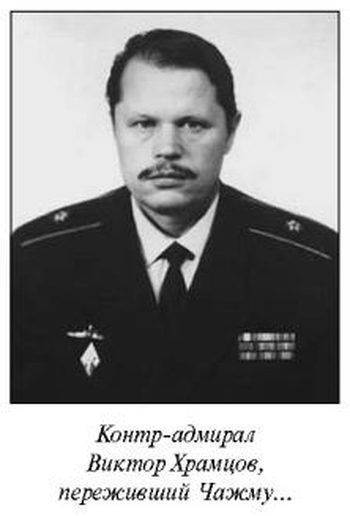
After the boat was cleared, the tugboat was put on the drain. K-431 has ceased to sink. On the boat arrived emergency party, consisting solely of the officers of the headquarters of the flotilla. When it was possible to drain the reactor compartment, and the boat podsplypla, a ragged board was welded. This allowed to put the K-431 back to the dosimetric vessel. The officers of the radiation safety service (SRV) of the flotilla, who began to measure the accident zones, climbed onto the boat. The officers worked directly in the zone and on the submarine itself, there were no sailors of military service. The work ended on August 23 in 16ch.00 min. Every day the group that had time to work in the emergency zone went to the hospital for testing. The next day a new group arrived on the boat. Thus, around 150 people passed through the emergency zone. Both the builders and the personnel of the fleet chemical protection regiment worked at the plant and in the village.
In the period of the struggle with the accident, the leadership of the fleet established a complete information blockade. The plant was quickly cordoned off, increased access control. In the evening, disconnected the village. Skotovo-22 with the outside world. The population of the village was not informed about the accident and its consequences, as a result of which the population was exposed to the unnecessary risk of receiving radiation exposure, which could have been avoided. 23 in August at 16.00 in tow K-431 was transferred to Pavlovsky Bay, the former main base of the 4 fleet. There she stood up to the 2010 of the year, after which she was sent for recycling to the ZVEZD DVZ.
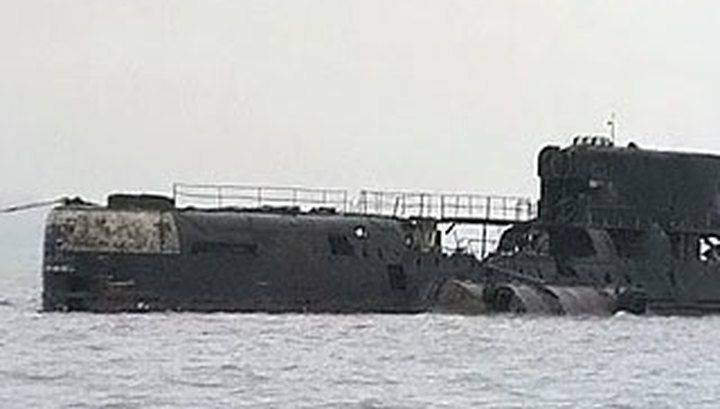
The investigation of the catastrophe was carried out by a commission led by Admiral Novikov, the head of the naval technical unit of the Navy. The Commission concluded that the cause of the tragedy was a violation of the governing documents and the lack of proper control over the congestion. And then the Pacific "Chernobyl" carefully classified. The investigation materials were securely hidden in the archive.
To eliminate the consequences of the accident, the territory contaminated with radionuclides was divided into two zones: the emergency zone itself and the radioactive fallout zone. The first included the territory of the enterprise and the water area of the bay with a radius of 170 meters around the submarine. The second zone covered the territory of the plant, the adjacent hills of the onshore technical base, located in the bay Sysoev. In this zone, not only military but also civilians were involved in eliminating the consequences.
In total, about 2 thousand people were attracted to eliminate the consequences of the accident. The individual dose of radiation basically did not exceed 5 rem, but 290 people received increased exposure. Acute radiation sickness developed in 7 people, radiation reaction was observed in 39 people. In total, more than 950 people were found affected.
Through 5-7 months, the radiation situation was normalized throughout the plant. Through the month of 2 after the accident, the radionuclide content in seawater decreased to the original background values. The results of field observations and numerous environmental surveys indicate that the 1985 accident of the K-431 submarine in Chazhma Bay did not have a measurable radiation impact on Vladivostok, its beach zone and the village of Shkottovo-22. The residual long-acting radioactive contamination of the area and bottom sediments in the area of Chazhma Bay is strongly localized and cannot lead to undesirable consequences. The concentration of radionuclides in the sea water of Chazhma Bay, the western passage of the Strelok Bay and the eastern part of the Ussuri Bay is at the level of background values characteristic of other regions of the Pacific Coast.
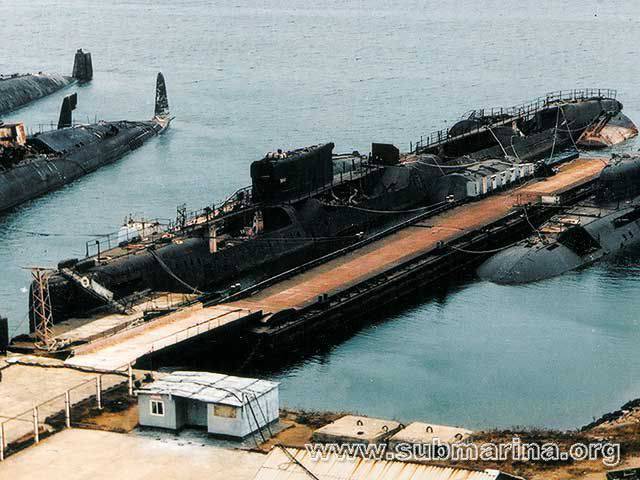
Sources:
Cherkashin N. Chazhma: How a Nuclear Reactor Blasted // Emergencies in the Soviet Navy. M .: Veche, 2010, S. 52-56.
Osipenko L., et al. On the eve of Chernobyl, Chazhma was in the fleet // Atomic Underwater Epic. Feats, failures, catastrophes. M .: Borges, 1994. C. 282-286.
Khramtsov V. Why nuclear disaster in Primorye did not warn Chernobyl // Typhoon. No. 16. C.38-41.
Mityunin, A. Black story about the nuclear submarine K-431. Errors of a nuclear accident a year later repeated Chernobyl // Novaya Gazeta. 22 April 2005
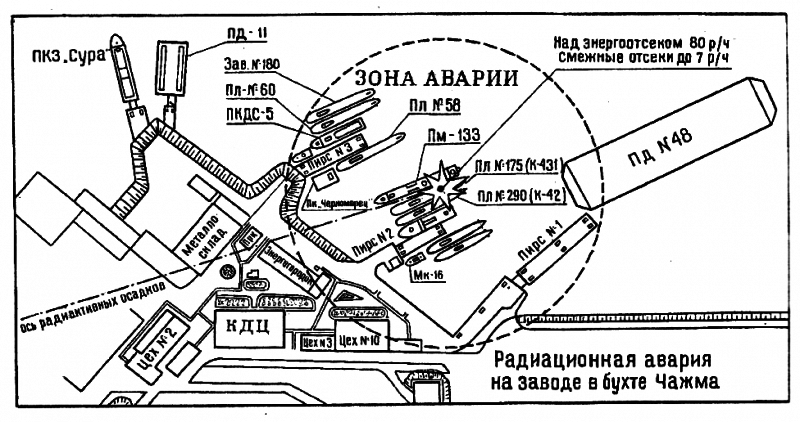
Information